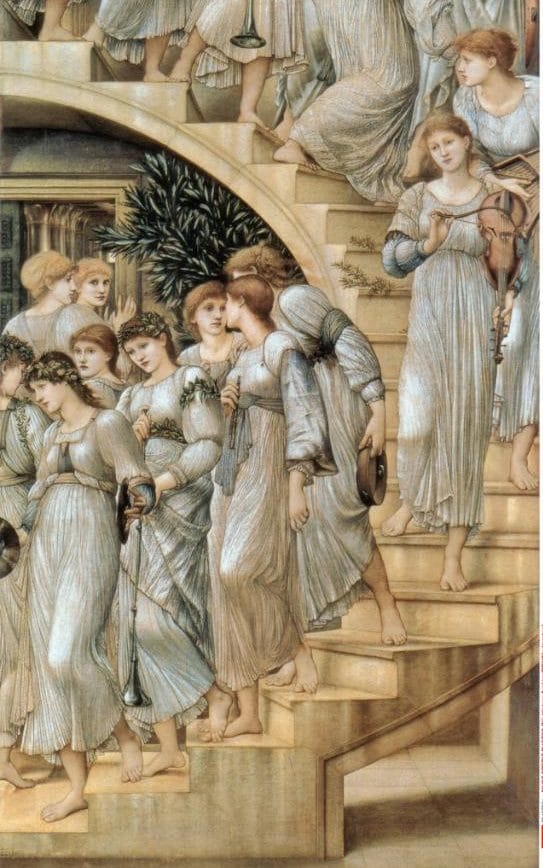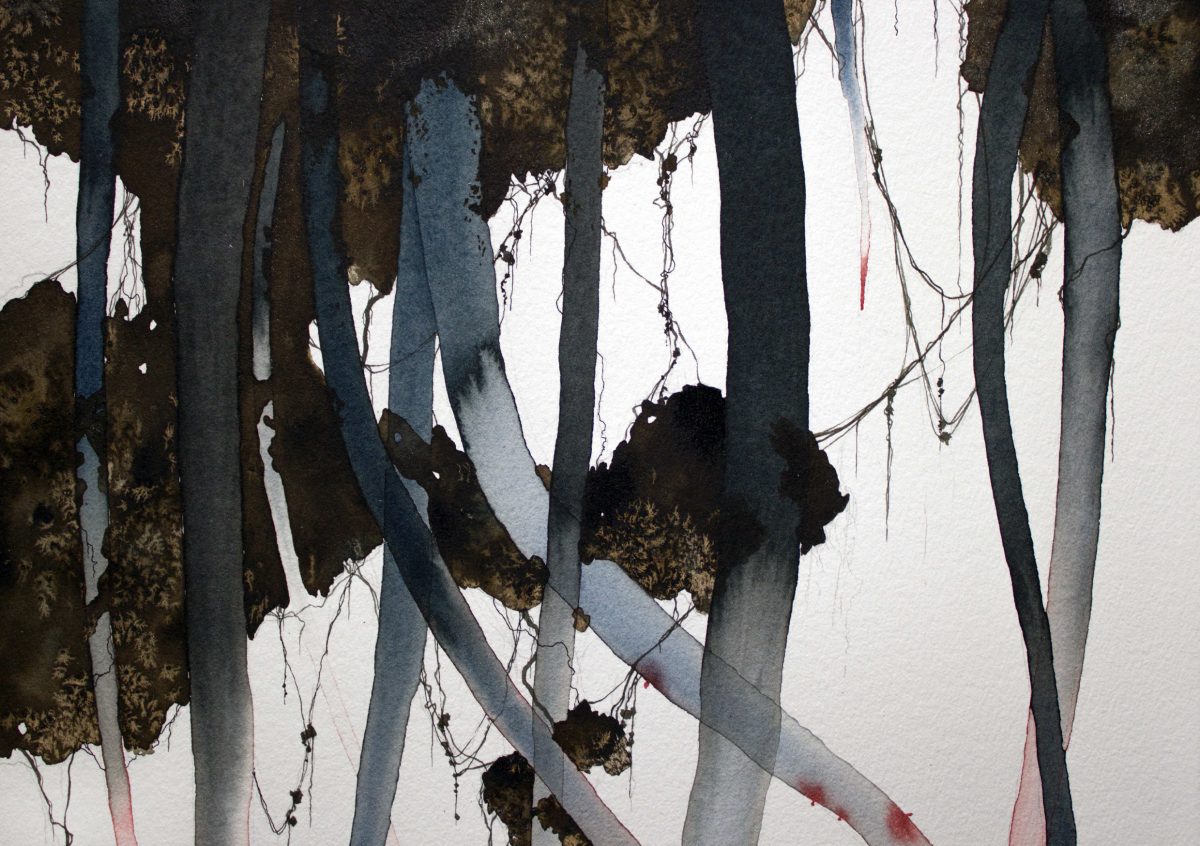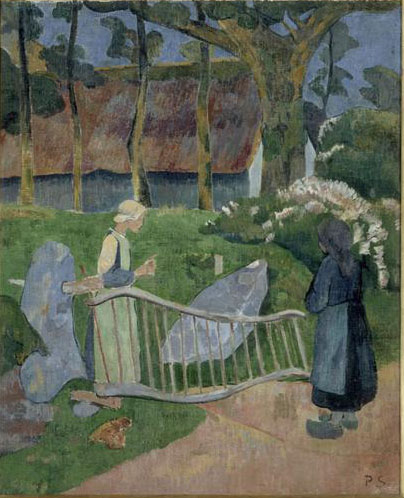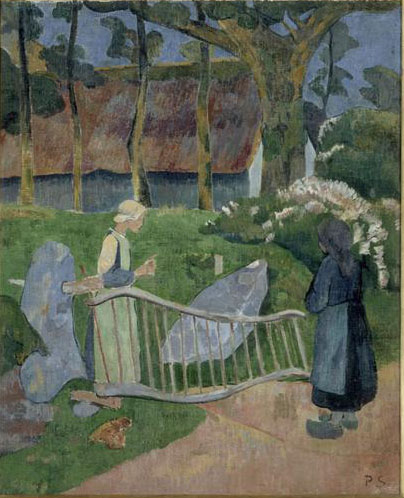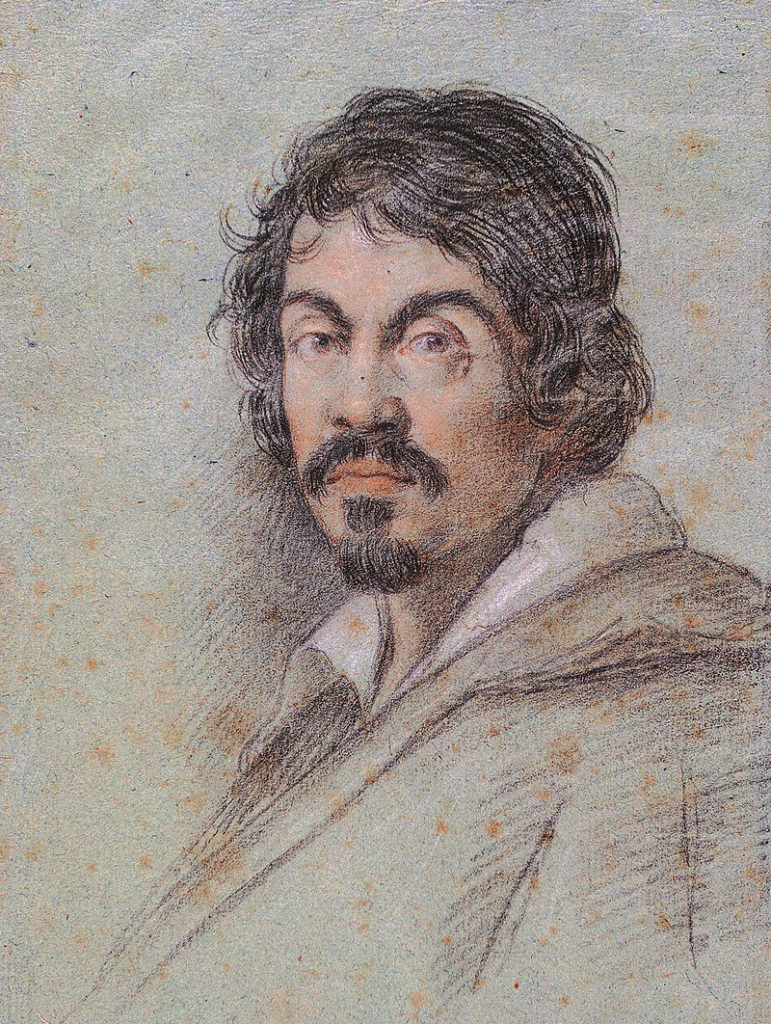10 things to know about Zao Wou-Ki
Ahead of an exhibition at Christie’s and a first museum retrospective in the U.S., we offer an introduction to the artist who bridged the divide between Eastern and Western traditions
1- Zao Wou-Ki studied under a pioneer of modern paining in China
Zao started drawing and painting at the age of 10. His father, a banker, encouraged his early interest in art, sending Zao to study at the Hangzhou School of Fine Arts under Lin Fengmian, a respected artist who was later recognised as a pioneer of modern painting in China. In 1941, at the age of 21, Zao presented his first exhibition in Chongqing and his father bought his first work.
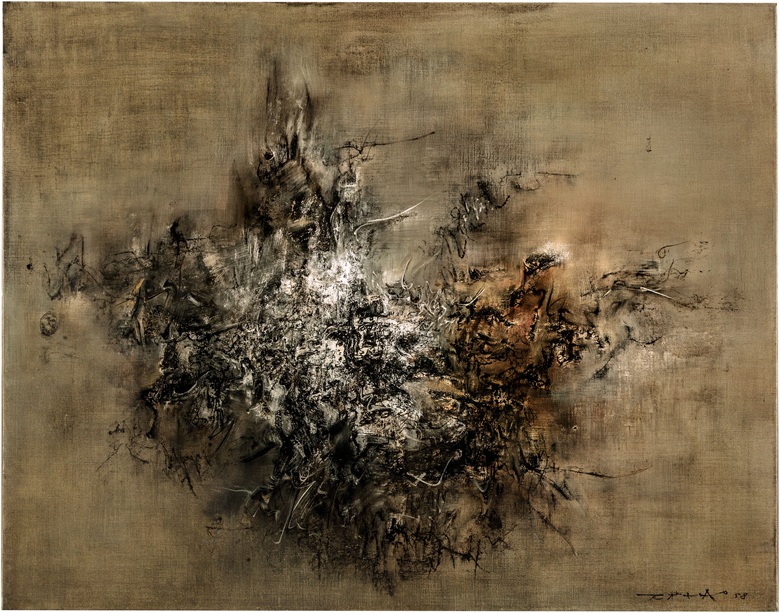 Zao Wou-Ki (1920–2013), Peinture, 1958. Oil on canvas. 28 ¾ x 36 ¼ in (73 x 92 cm). © Zao Wou-Ki, ProLitteris, Zurich
Zao Wou-Ki (1920–2013), Peinture, 1958. Oil on canvas. 28 ¾ x 36 ¼ in (73 x 92 cm). © Zao Wou-Ki, ProLitteris, Zurich
2- Paris was an inspiration for Zao
After five years as an art teacher at the Hangzhou School, Zao went to Paris in 1947 to take art courses. He spent his first afternoon at the Louvre. In 1948, he made the move permanent.Paris was an inspiration for Zao, who had idolised Matisse and Picasso in his formative years and continued to be influenced by Western modernism and the work of the Impressionists and Expressionists. Here, he would become one of the art scene’s established luminaries until his death in 2013.
3- Moving to New York saw him develop a bolder style
The artist first discovered New York on a trip with the French artist Pierre Soulages, and the city opened up new perspectives and opportunities for him. Zao benefited from visibility in the U.S. through the Cadby-Birch Gallery and the Kleeman Gallery in 1954 and 1956. Subsequently the artist was invited to join the prestigious roster of the Samuel Kootz Gallery, with whom he remained until the gallery’s closure in 1966. In New York Zao encountered the work of Abstract Expressionist painters Paul Klee, Franz Kline, Philip Guston and Adolph Gottlieb, and in response began to develop a bolder style working with bigger canvases.
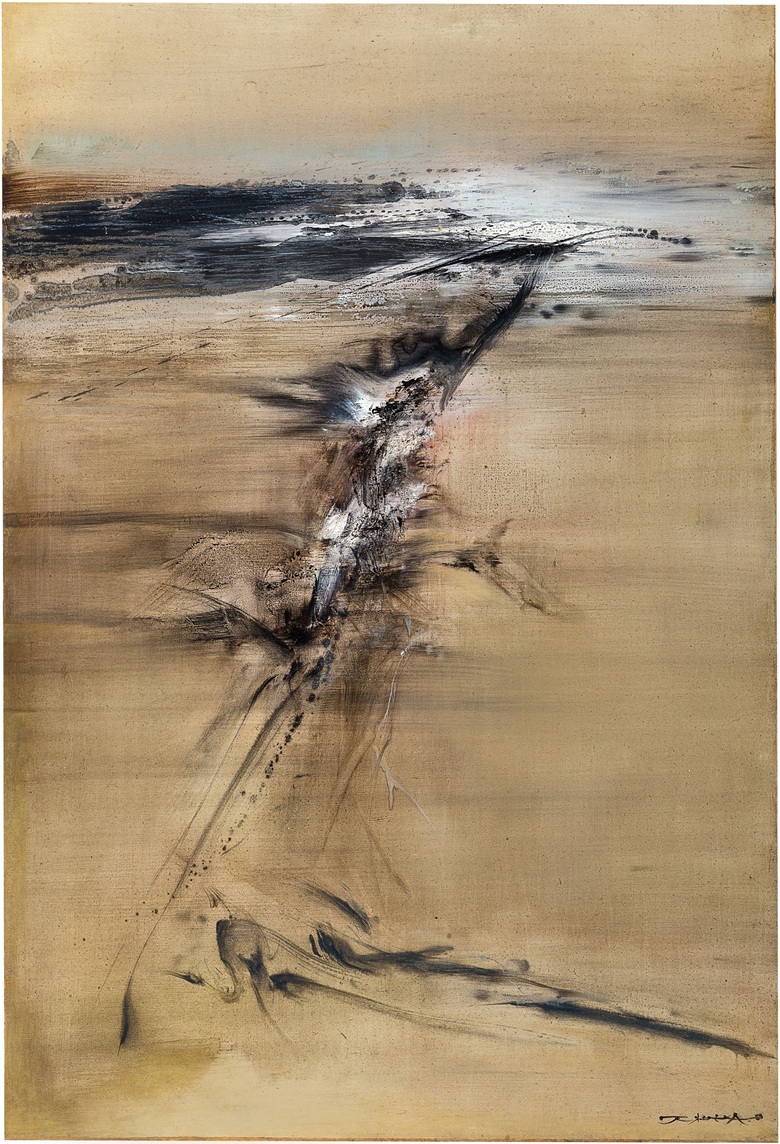 Zao Wou-Ki (1920–2013), 10.5.62, 1962. Oil on canvas. 51 ⅛ x 35 ⅛ in (130 x 89 cm). © Zao Wou-Ki, ProLitteris, Zurich
Zao Wou-Ki (1920–2013), 10.5.62, 1962. Oil on canvas. 51 ⅛ x 35 ⅛ in (130 x 89 cm). © Zao Wou-Ki, ProLitteris, Zurich
4- He mixed with the greatest artists of their day
Zao cultivated an extensive circle of friendships with fellow artists and influential cultural figures during his lifetime. He developed close relationships with Jean-Paul Riopelle, Alberto Giacometti, Joan Miró, Joan Mitchell and Sam Francis, among many others.
5- He inspired poetry with his work
Zao Wou-Ki first worked as an illustrator with Henri Michaux, the French poet and painter. In response to Zao’s first lithographs, Michaux had spontaneously written eight poems to accompany Zao’s work, without ever having met the artist. The result, Lecture par Henri Michaux de huit lithographies de Zao Wou-Ki (1950), was the beginning of a lifelong collaboration and friendship.
 Zao Wou-Ki (1920–2013), 18.11.66, 1966. Oil on canvas. 38 x 76 ⅝ in (96.5 x 194.5 cm). © Zao Wou-Ki, ProLitteris, Zurich
Zao Wou-Ki (1920–2013), 18.11.66, 1966. Oil on canvas. 38 x 76 ⅝ in (96.5 x 194.5 cm). © Zao Wou-Ki, ProLitteris, Zurich
6- He had a complicated relationship with Chinese art
Zao’s initial exposure to Western modernist painting led to a rejection of the classical conventions of Chinese calligraphy and landscape painting. By 1971, however, he had returned to the brush-and-ink technique in which he was trained in China, with work that reflected its sources in Chinese traditions but also his conceptual roots in Western abstraction.Zao explained in a 1962 interview with the French magazine Preuves, ‘Although the influence of Paris is undeniable in all my training as an artist, I also wish to say that I have gradually rediscovered China.’ He added, ‘Paradoxically, perhaps, it is to Paris that I owe this return to my deepest origins.’
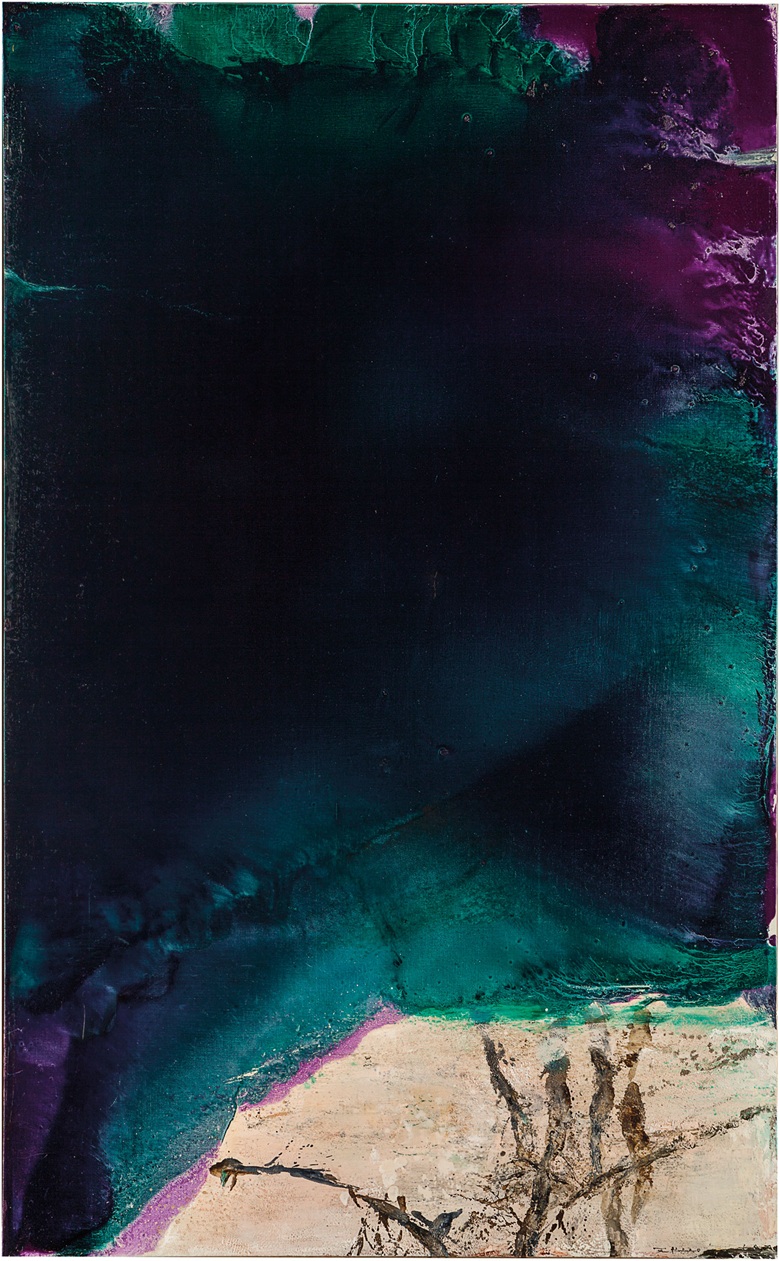 Zao Wou-Ki (1920–2013), 18.10.89, 1989. Oil on canvas. 63 ⅜ x 39 ⅜ in (161 x 100 cm). © Zao Wou-Ki, ProLitteris, Zurich
Zao Wou-Ki (1920–2013), 18.10.89, 1989. Oil on canvas. 63 ⅜ x 39 ⅜ in (161 x 100 cm). © Zao Wou-Ki, ProLitteris, Zurich
7- Jacques Chirac, former president of France, was a friend
As an aficionado of Asian art, Chirac developed an admiration for the works of Zao, and wrote the preface to the catalogue for Zao’s first major Chinese retrospective in Shanghai in 1998. In 2006 Chirac appointed Zao to the Legion of Honour, France’s highest recognition.
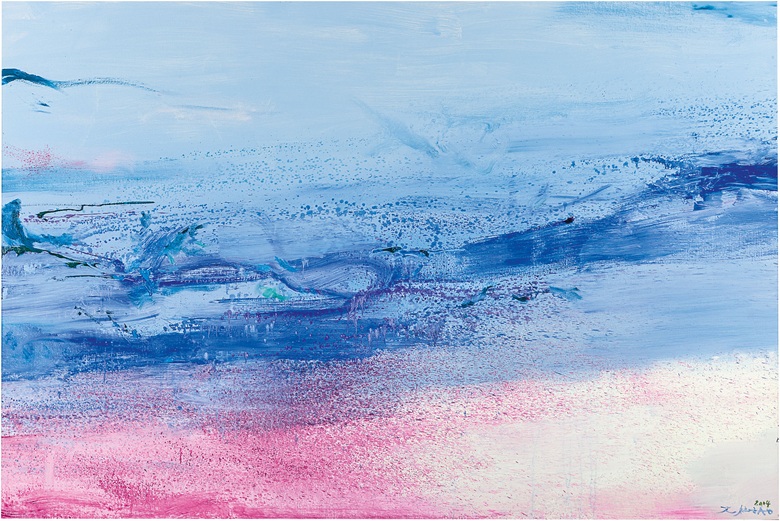 Zao Wou-Ki (1920–2013), Histoire sur la mer, 2004. Oil on canvas. 51 ⅛ x 76 ¾ in (130 x 195 cm). © Zao Wou-Ki, ProLitteris, Zurich
Zao Wou-Ki (1920–2013), Histoire sur la mer, 2004. Oil on canvas. 51 ⅛ x 76 ¾ in (130 x 195 cm). © Zao Wou-Ki, ProLitteris, Zurich
8- Demand for his work was and remains — strong
Demand for Zao’s work was strong throughout the 1960s in Paris, London and New York, and took off in the Asian market in the 1970s and 1980s. In the years before his death in 2013 at the age of 92, Zao’s works consistently sold at auction for six figures, often reaching auction highs of US$5 million and more. In 2011, sales of his paintings totalled US$90 million. Posthumously, his works have continued to accrue in value, as shown with the sale of Untitled (Vert émeraude) for HK$70,680,000 / US$9,144,769 in May at Christie’s Hong Kong.
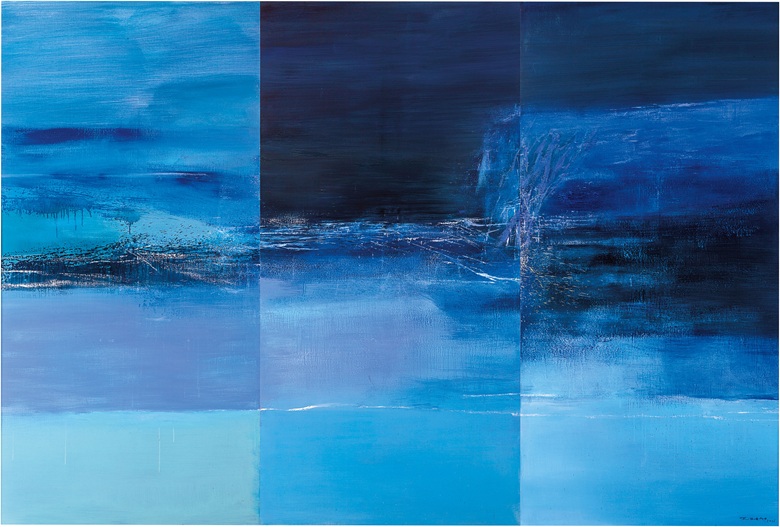 Zao Wou-Ki (1920–2013), 19 mars 2006, 2006. Triptych, oil on canvas. Each: 76 ¾ x 38 ¼ in (195 x 97 cm). Overall: 76 ¾ x 114 ⅝ in (195 x 291 cm). © Zao Wou-Ki, ProLitteris, Zurich
Zao Wou-Ki (1920–2013), 19 mars 2006, 2006. Triptych, oil on canvas. Each: 76 ¾ x 38 ¼ in (195 x 97 cm). Overall: 76 ¾ x 114 ⅝ in (195 x 291 cm). © Zao Wou-Ki, ProLitteris, Zurich
9- His name is prescient
Wou-Ki means ‘no limits’ in Chinese — a prescient name for an artist who experimented in oil on canvas, ink on paper, lithography, engraving and watercolour, and who embraced different cultural identities without ever being beholden to one.
10- His first museum retrospective in the United States begins this September
Though Zao’s paintings are in the collections of the Museum of Modern Art, the Guggenheim and Tate Modern, his first U.S. museum retrospective, No Limits: Zao Wou-Ki, opens at the Asia Society in New York on 9 September. Drawing together key works from public and private collections in America, Europe and Asia, this exhibition reveals Zao Wou-Ki’s status as a true ‘transnational’ artist.
Source : Zao Wou-Ki: 10 things to know
Save

